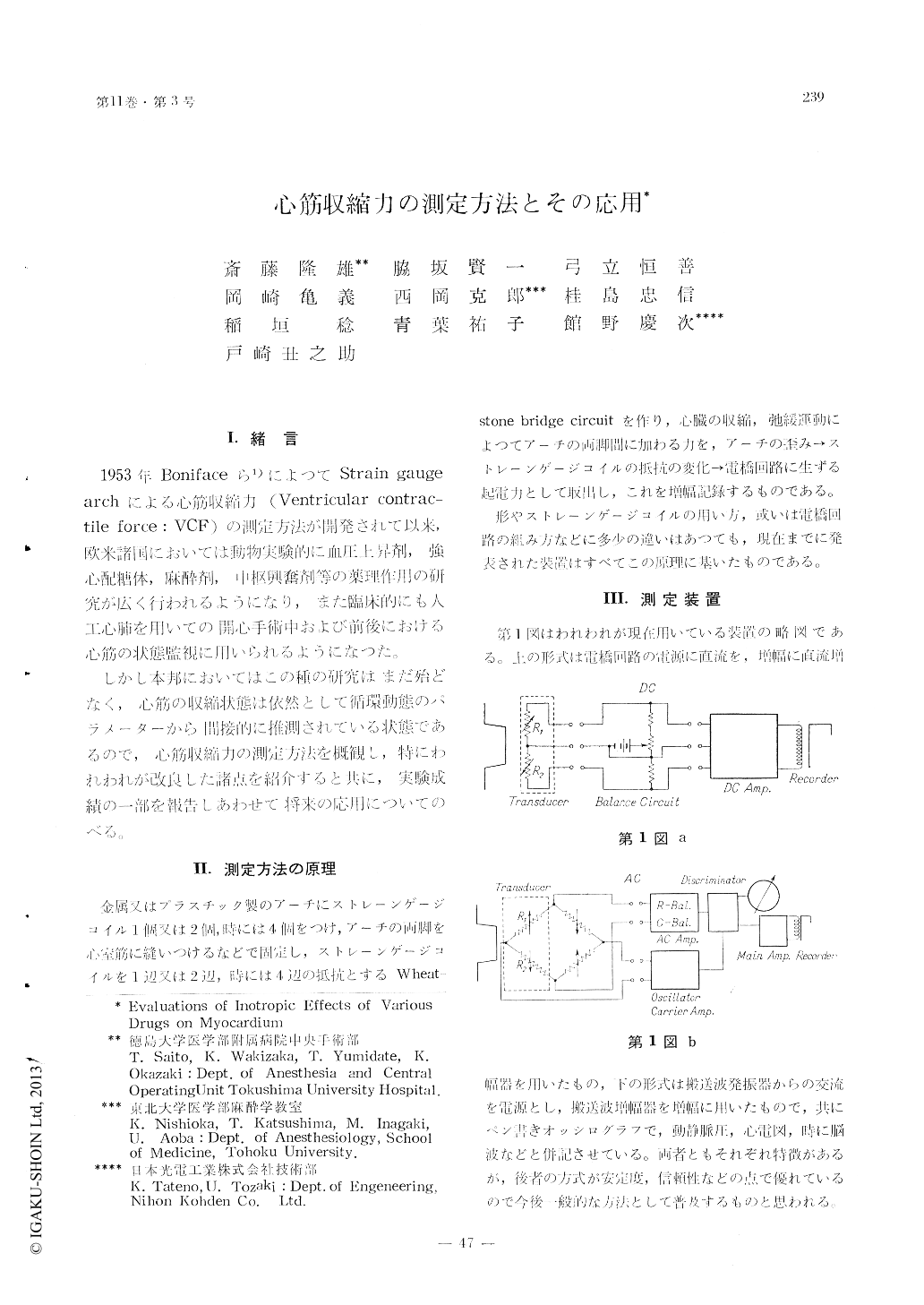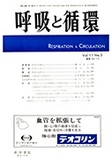Japanese
English
- 有料閲覧
- Abstract 文献概要
- 1ページ目 Look Inside
I.緒言
1953年Bonifaceら1)によつてStrain gauge archによる心筋収縮力(Ventricular contrac—tile force: VCF)の測定方法が開発されて以来,欧米諸国においては動物実験的に血圧上昇剤,強心配糖体,麻酔剤,中枢興奮剤等の薬理作用の研究が広く行われるようになり,また臨床的にも人工に心肺を用いての開心毛術中および前後における心筋の状態監視に用いられるようになつた。
しかし本邦においてはこの種の研究はまだ殆どなく,心筋の収縮状態は依然として循環動態のパラメーターから間接的に推測されている状態であるので,心筋収縮力の測定方法を概観し,特にわれわれが改良した諸点を紹介すると共に,実験成績の一部を報告しあわせて将来の応用についてのべる。
An apparatus and method of measurement of ventricular contractile force in large animals were introduced in details in the present paper.
A strain gauge arch technique, primarily introduced by Boniface and his associates in 1953, was modified for more accuracy and more ease of practical application by the authors.
A small transducer (strain gauge arch) having two strain gauge coils as its parts, acts as two electrical resistances in a Wheatstone bridge circuit and changes in magnitude of electrical resistances in those coils, elicited by the deformation of transducer caused by the rhythmic contraction of heart muscle, reflects to changes in electrical potentials at the outlets of the bridge circuit. This changes are amplified and recorded using direct current amplified or carrier type amplifier and pen writing oscillograph.
Changes in electrical resistance of a strain gauge coil induced by temperature changes are well compensated by simultaneous use of another strain gauge coil as a dummy gauge in the transducer.
Effects of various drugs including anesthetic agents and vasopressors were introduced briefly as examples of VCE (Ventricular contractile force) measurement.

Copyright © 1963, Igaku-Shoin Ltd. All rights reserved.


